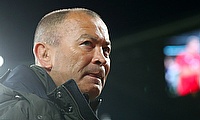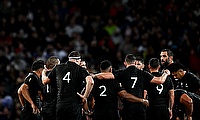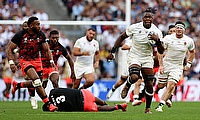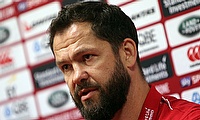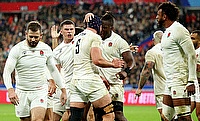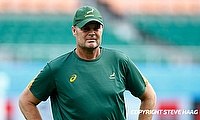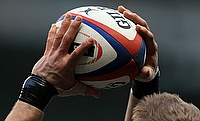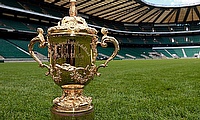Rugby World Cup History - The Plight of Max Brito
The 1995 rugby world cup is the most talked about in the competition's short history. It was the first major sporting event held in post-apartheid South Africa and became the symbol of a united nation. Few will ever forget Mandela walking onto the field to present the Webb Ellis trophy clad in a Springbok journey or the scenes of the Springbok side taking rugby to the townships. It was the moment when sport became bigger than politics and has now been immortalised, not only amongst sports fans, but within Hollywood film Invictus.
The other reason why the 1995 tournament is remembered is the emergence of Jonah Lomu. In the space of a month Lomu rose from a little heard of winger to the game's first global superstar. Built like a back row forward, but with incredible speed to match Jonah was unstoppable. That was certainly the case when the All Blacks lined up against England in the semi-final. By the end of the game Lomu had crossed for four tries and left the English defence looking rather embarrassed.
In amongst all the discussions that take place about the tournament the name of Ivory Coast winger Max Brito is rarely mentioned. In the lead up to writing this article I mentioned Brito to a few rugby supporters and no-one could tell me anything about him. His story is the dark side of the 1995 world cup, a side that is often forgotten or brushed under the carpet in favour of the highlights of the tournament.
1995 is the only time that the Ivory Coast have qualified for the World Cup and their inclusion prompted many to question whether minnows should be allowed to play in the tournament. Their opening game against Scotland, in which they lost 89-0, only added to this debate. The traditional sides were not only better quality, but fitter, stronger and faster. With the recent advancement of professionalism the gulf would only get wider resulting in more one sided games and a risk of serious injury. It is unfortunate that the argument came true all too quickly.
The Ivory Coast made a much better showing of themselves against France, albeit still losing by 54-18, and went into their final game against Tonga with some confidence resorted. Three minutes into the game left winger Max Brito caught a high ball in his own half and began a trademark counter attack. He was brought down by an innocuous tackle by Tongan flanker Inoke Afeaki. Players piled in to form a ruck but by the time the ruck had cleared Brito lay motionless on the floor. He had suffered huge spinal injuries that, despite the best efforts of surgeons, have left him paralysed from the neck down.
In the true spirit of the game all of the competing nations burdened the cost of Brito's medical treatment. Compensation was also given to Brito in the aftermath and he had been invited to attend subsequent World Cups. This has not been enough to compensate for the trauma that Brito suffered. Since his injury he has separated from his wife and all but lost contact with his children. He can no longer work or play the game he loved and has to rely on the support of his parents and drips of money that have been raised for him by the Professional Rugby Players Association. On the eve of the last World Cup, speaking to a French magazine, Brito described his plight as a curse and all but said he was contemplating suicide.
Max Brito's story is the dark side of the Rugby World Cup, but one that shouldn't be forgotten. It is a reminder that the game we love, as Max did, is a physical one that comes with its dangers. Injuries do happen and every now and again they become life-threatening or altering. In these cases, we should not hide them away, but rally together as supporters and with the authorities to ensure the best possible support is given to the players and families involved.

